Electric bikes are becoming more powerful as advances in modern motor and battery technology push their development ever further. However, with motors now offering up to 1,000 watts (peak power), have they become too powerful?
Powerful ebikes offer plenty of benefits, meaning a lack of fitness due to age, illness or injury needn't be a barrier to cycling.
For mountain bikers, the erosion of popular trails is already a hot topic thanks to the increased accessibility offered by eMTBs.
But with extra electrical power on tap, could mountain bikers be tearing up the trails more than before? And could more power mean more danger to other riders from users of electric mountain bikes and electric gravel bikes on shared-use trails?
Editor's note: we last updated this article on 22 May 2025 to clarify information regarding ebike regulation.
Are more powerful motors legal?
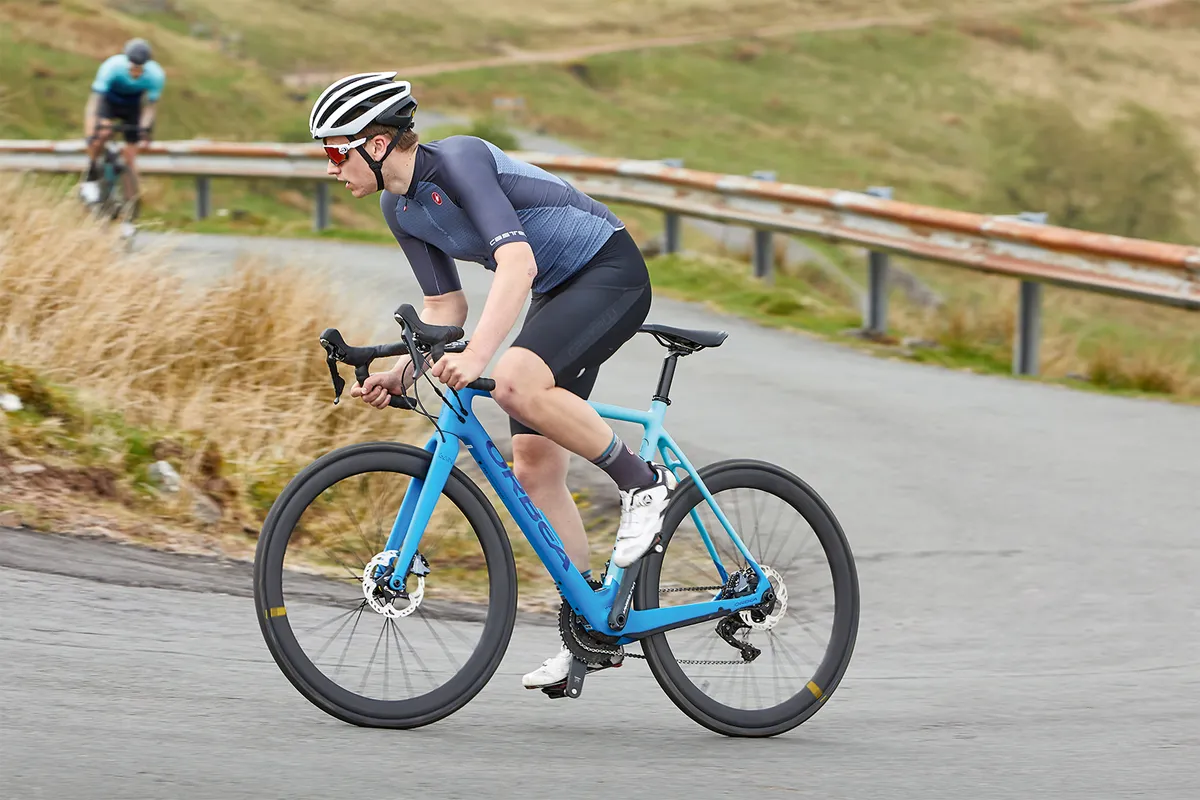
UK and EU government regulation stipulates that on a public highway, an ebike motor's continuous rated power must not exceed 250 watts. The motor must cut off electrical assistance when the bike reaches 15.5 miles per hour.
Regulation (EU) No 168/2013 defines “maximum continuous rated power” as the maximum 30 minutes' power at the output shaft of an electric engine as set out in United Nations Economic Commission for Europe (UNECE) regulation No 85.
This means an ebike can generate over 250W for brief moments as long as it averages out at less than 250W for a period of 30 minutes.
Across the Atlantic, US regulations allow more power and speed, capping Class 1 ebikes (which must be pedalled, with the motor providing assistance only) at 750 watts maximum continuous rated power and a maximum speed of 20mph.
Regardless of power, the maximum speed limit in your country still applies. All ebikes must be pedalled to propel them, with electrical power providing assistance. As such, 'twist-and-go' ebikes are illegal for use on the public highway: unless registered as a motorcycle, they can only be used on closed courses on private land.
Could the law be about to change?

Maximum, or peak, power describes the maximum power that the motor can call up for a short time under optimal conditions. The duration it’s available for depends on factors such as the temperature of the ebike components, the charge level of the battery and the ambient temperature.
By calling up the maximum power, the ebike components can heat up. Often, maximum power is restricted so it cannot be used permanently, in order to protect the components.
This may not be the case forever, though, because the European Union might consider capping maximum power at 750 watts as the Zweirad Industrie Verband (the German cycling industry association) makes recommendations.
This certainly suggests the EU thinks modern ebikes may be too powerful.
How much power do modern ebikes have?

The power available from modern top-spec eMTB motors is technologically impressive. Bikes with DJI’s incredible Avinox motor are now boasting maximum power figures of 105Nm of continuous torque and a chain-melting 1,000 watts of peak power. The Avinox is found on bikes such as the Amflow PL and new Forbidden Druid-E.
These figures used to be available only in a temporary Boost mode (where you can still access a whopping 120Nm torque temporarily, for a short 30 second burst), but the 1,000 watts peak power delivered by the Avinox is now always available when in the 'turbo' mode. For context, 120Nm torque is more than some small cars.
Electronics giant Bosch has just released a firmware update for its latest Gen 5 motor, meaning it has 100Nm of torque and 750W of peak power.
This power is intoxicating to use; I was pulled up a hill by an Amflow PL and the torque on offer was relentless; it was like being yanked by a motorbike.
More power means more options

All ebikes are limited in the assistance they can provide, so what’s the point of all this power? Well, you can reach top speed more quickly, but more importantly, it means you can maintain the maximum speed even up steep gradients. So, 1:20 gradient hills can be summited with ease and at speed.
For mountain bikers, this means more of each ride can be spent descending, and less time slogging up fire roads back to the top.
High-power eMTBs open up opportunities for increasingly steep and technical climbing challenges.
Such bikes are now only limited by rear-wheel traction and the rider’s ability to keep the front wheel on the ground, rather than a limit of power from legs and motor.
This presents ample opportunities to put your skills to the test on climbs. If you watch riders such as Whyte Bikes’ Chris Akrigg or Santa Cruz’s Danny MacAskill, you'll see what's possible with a modern eMTB (although a dose of almost superhuman skill helps).

We can have more fun, challenge ourselves in new ways and spend less time climbing if we choose a modern ebike. So, what’s not to like?
We spoke to Robin Grant, chair of the MTB Trail Alliance, who believes the benefits of eMTBs outweigh the costs. “Some new riders are being introduced to MTB via an eMTB. It’s great to see more people out on bikes together, so they’re a brilliant thing for the sport,” he says.
eMTBs are great
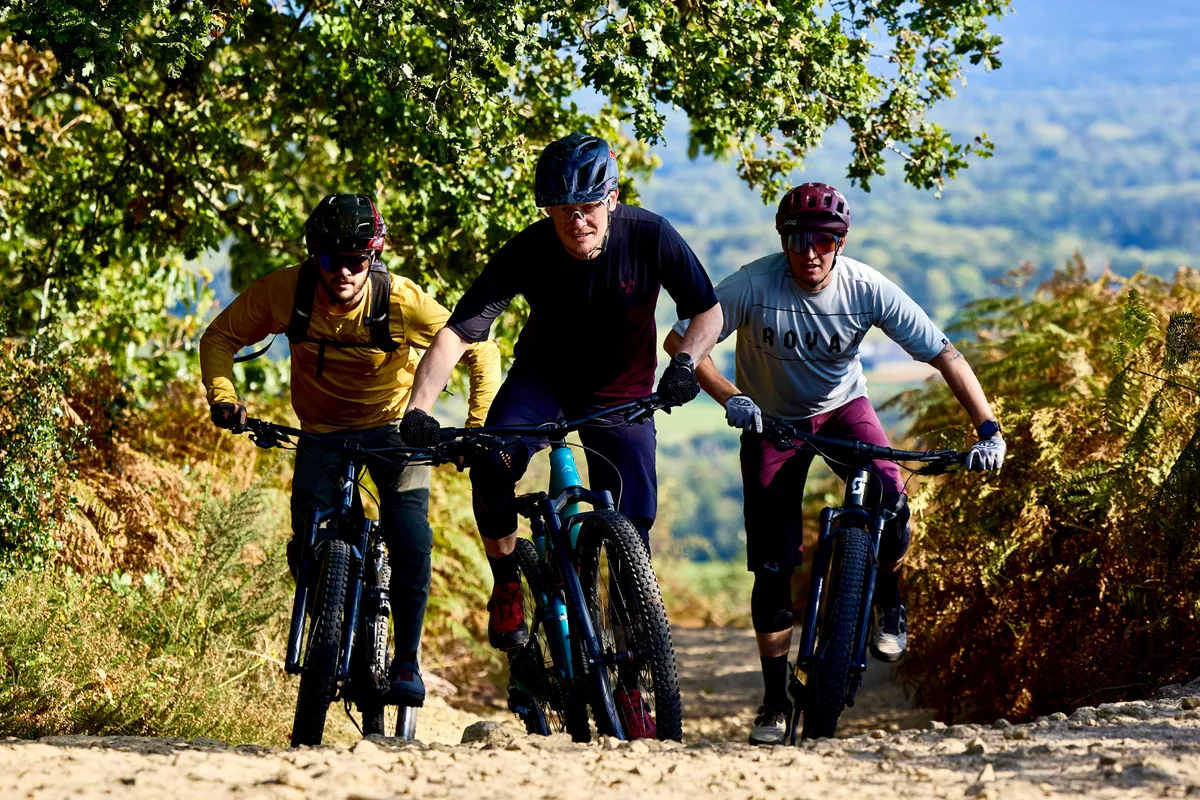
Grant says eMTBs are good for mountain biking. “They’re a great leveller in fitness, where a powerful motor can offer less fit riders the extra power to keep up with fitter riders on less powerful bikes, allowing riders of all abilities to ride together,” he states.
Unfortunately, as well as being more expensive to buy and run, bike parks charge eMTB owners a premium to use their trails.
Grant says a small premium is probably justified based on the ability to get more laps in, but doubling the cost seems disproportionate. However, BikePark Wales for example, offers free ebike charging, which helps offset that cost.
Collision risk
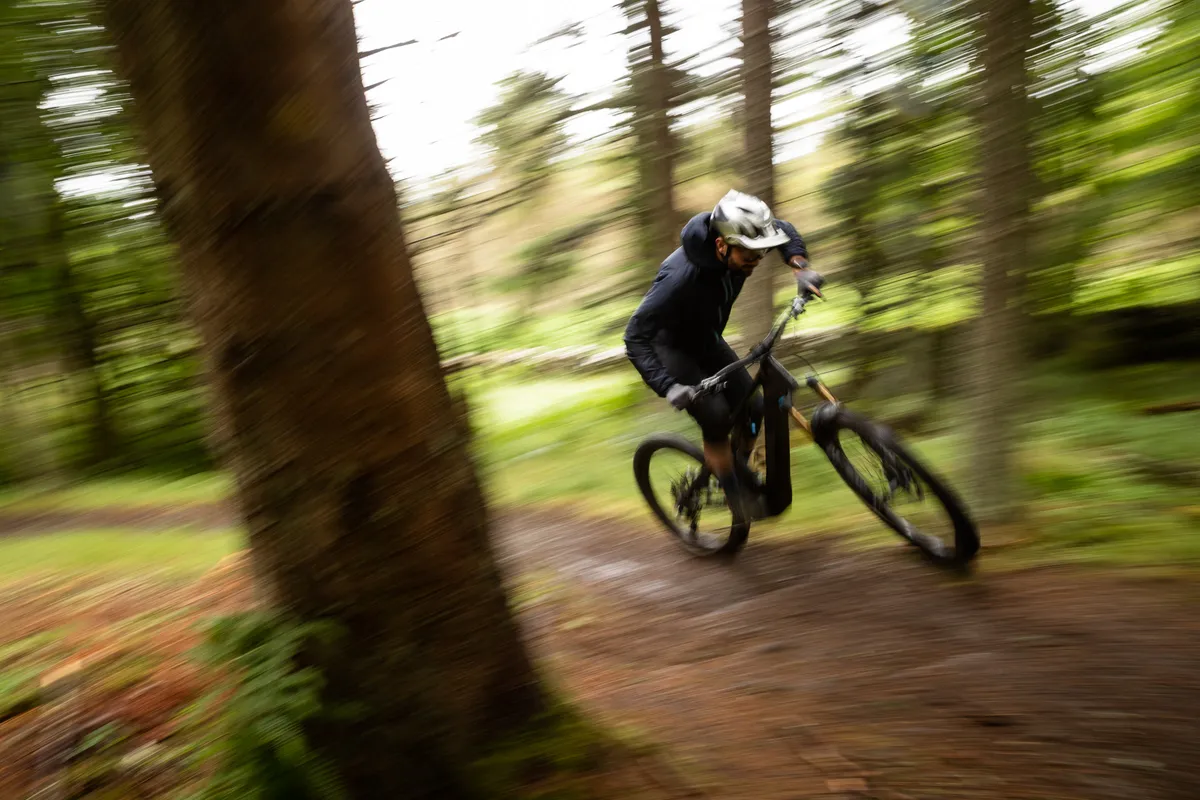
Finally, the extra speed generated on climbs could cause a safety issue for descending riders on two-way trails (such as bridleways in the UK). Of course, the speed limit still applies, but could riders ascending fast, sitting on the 15.5mph limiter (or 20mph in the US) on powerful eMTBs increase the chances of a collision with a descending rider on a two-way trail?
Electric mountain bikes are pushing the evolution of the way MTB trails are built, too. They can handle much steeper climbs, so trails that used to be push-up only are now rideable for those on eMTBs.
Will more power mean more erosion?

I asked Grant whether more powerful eMTBs cause more erosion, and he explained: “We don’t know how much erosion eMTBs cause. As an eMTB and an analogue rider myself, intuition tells you that riding an eMTB means you cover more mileage and do more runs, but I’m not convinced that there is more erosion per run.”
Most eMTB group rides cover more miles, but Grant estimates only around 20% more than non-assisted group rides. “Even though the bikes are faster, there are still chats and rests," he says. "And often people on analogue MTBs come along too, so the eMTBers' pace and range can be limited by them.”
The combined weight of the bike and rider isn't significantly different either. “A larger rider with more kit on an analogue bike could weigh the same as a smaller rider on an eMTB,” he says.
What does the science say?
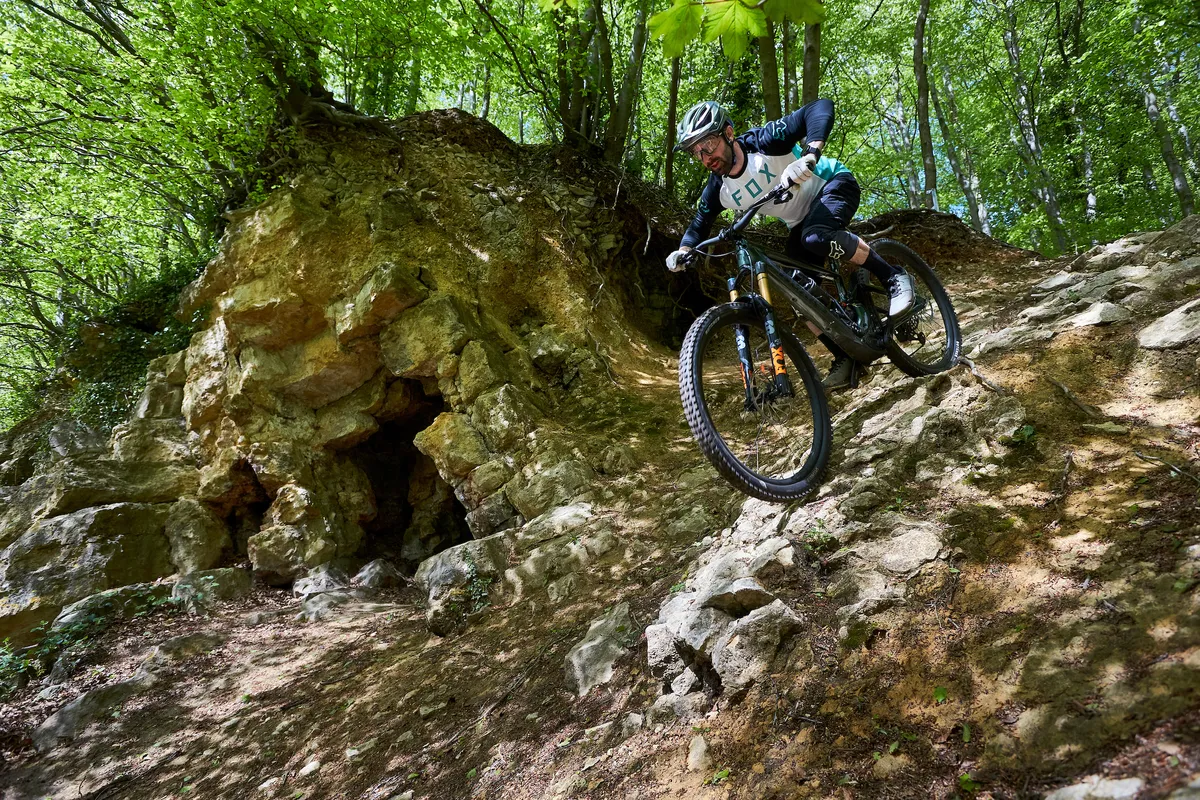
A study from 2016 states there is no significant difference between the level of erosion caused by a regular mountain bike and an eMTB.
However, back in 2016, bikes typically offered a maximum output of around 250 watts. So we could postulate that if their power output was tripled or quadrupled (like DJI Avinox and Bosch-powered bikes) erosion might well increase too.
To get a trail builder’s perspective, I tracked down Andrew from Dean Trail Volunteers, based in the UK's Forest of Dean.
“eMTBs are great for people with disabilities and physical limitations,” says Andrew. “They give people the ability to access all the joys of mountain biking, thanks to a little extra help from a motor and battery.”
But does everyone feel this way?
“Peeling apart people's assumptions about eMTBs and what they’re seeing can be tricky,” explains Andrew. “Some trail builders can be biased, as a lot of diggers have been involved in mountain biking a long time, and aren’t necessarily eMTBers.”
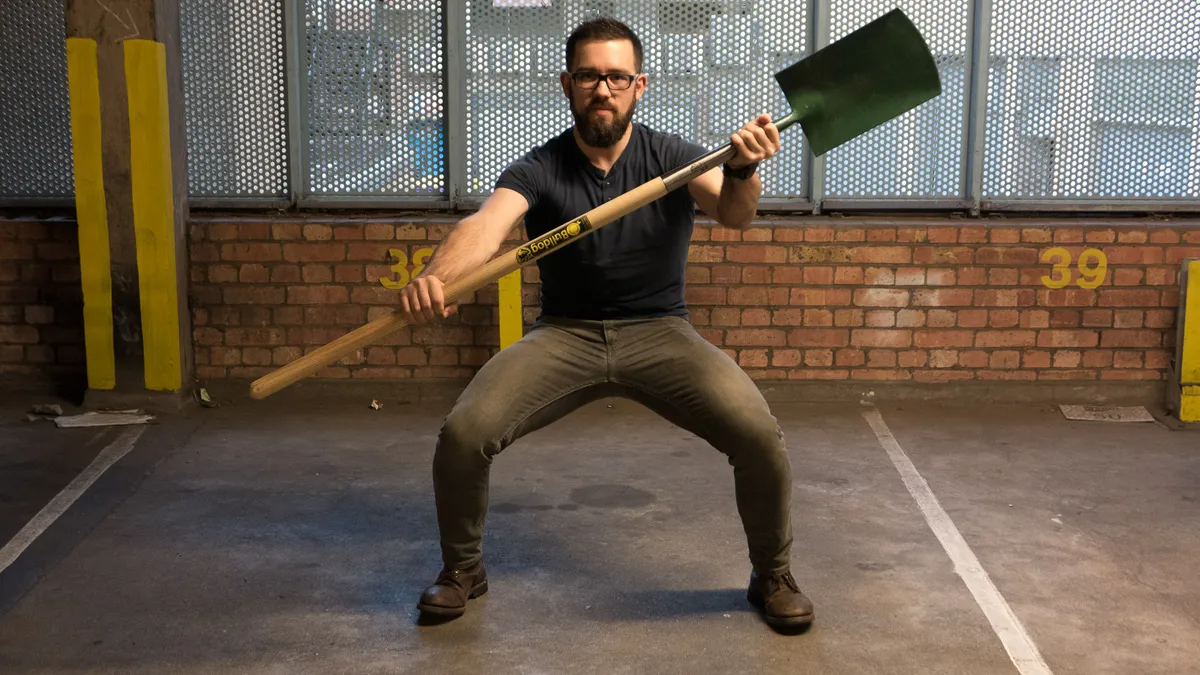
I asked Andew if the latest crop of eMTBs would cause increased erosion and wear on the trails. “There’s no doubt an eMTB is heavier, they usually have more aggressive tyres to handle the extra power and create traction, they do more runs, longer rides, twice or three times as many descents in a year,” he says.
Andrew adds that the riding style required for eMTBs is more ‘point and shoot’, which could add to the erosion when compared to non-assisted bikes, which flow more.
According to Andrew, the trails are suffering, and erosion is increasingly evident, but whether this is because of increased traffic, more eMTBs, or external factors such as evolving weather conditions, is difficult to tease apart because there are so many factors.
MTB trails are changing
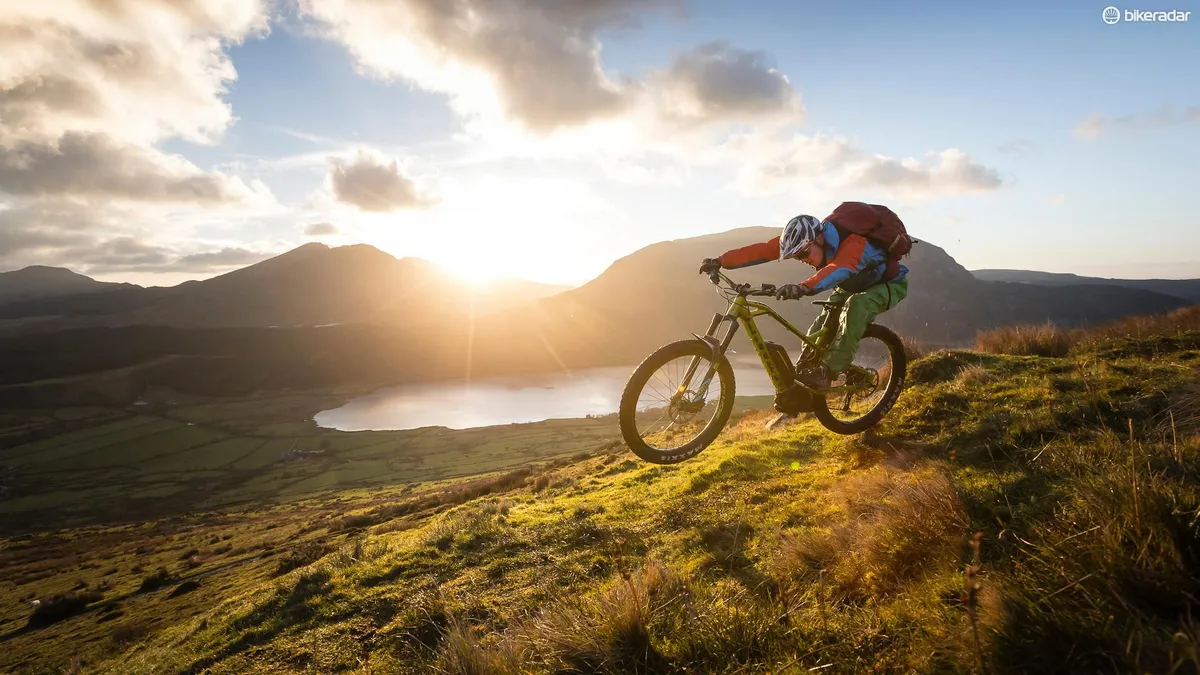
The types of trails eMTBers want to ride are changing, too.
“As an increasing number of riders choose more powerful eMTBs, we’re finding we need to change how we design trails,” says Andrew, explaining that he thinks riders' average speeds are rising, especially on the climbs.
“The Forest of Dean’s blue-graded tracks were formerly gentle XC loops with traditional climbs, but now we have to put berms on the climbs.
“Where riders would have been going 5-10mph before, now they’re going up to 15.5mph and consequently they need the support in the corners, even uphill”.
Andrew adds that it’s now a necessity to risk assess for this potential increased speed, even on uphill trails.
Steep ‘hero’ shortcuts, which would previously have been solely for super-fit and strong XC riders, are becoming much more established. Andrew says the DTV has started putting in steeper and more technical rock climbs: challenging, surfaced features that go straight up the steepest parts of the hill.
Is more power needed?

Andrew owns both an SL (lightweight) eMTB and a full-fat eMTB, and has reservations about the newest, most powerful ebike motors.
“To be honest, I don’t understand where the super-powerful new DJI bikes could use all that power," he says. "I feel like you could only use it on very steep, very grippy climbs, which are very straight and not too technical.”
Powerful eMTBs could change social habits

The social aspects of riding could be set to change too, says Andrew. “If I’m riding the SL alongside full-fat riders, it’s a real challenge to keep up. Will this same thing happen with super-powerful eMTBs and regular eMTBs? It’s nicest to go in a group where everyone has similar power.”
However, Andrew thinks the most worrying aspect about the race for extra power is the potential that it might lead to ebikes becoming increasingly similar to electric motorbikes.
“Will the latest crop of eMTBs start to evolve ride characteristics which emulate non-legal e-motorbikes, like the extreme over-run racing motors now?” he wonders.
So, electric bikes are here to stay, and modern technology means power continues to increase (along with range).
The new tech doesn’t pose any direct threats to riders or the cycling scene, although it does seem as if the way off-road trails (particularly uphill sections) are built is destined to continue evolving.
We are all responsible for how we behave on the trails, and ebike users now have an extra responsibility with all the power their bikes offer. These bikes need to be used considerately in order to preserve our trails, and mindfulness of other riders is needed when on shared trails.




